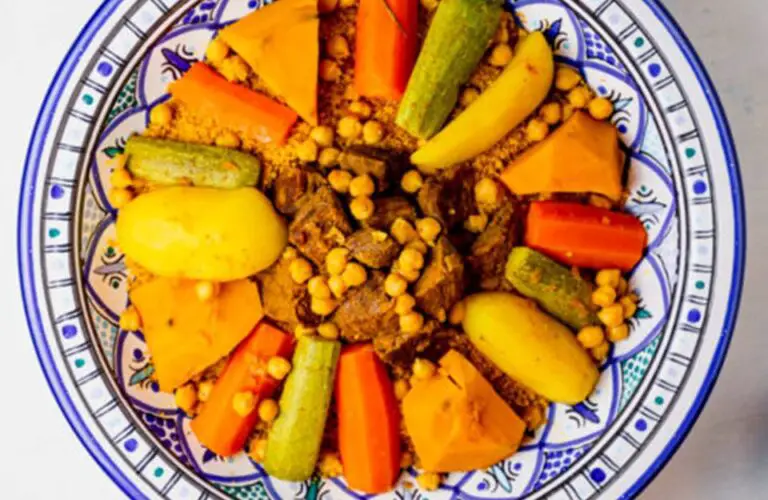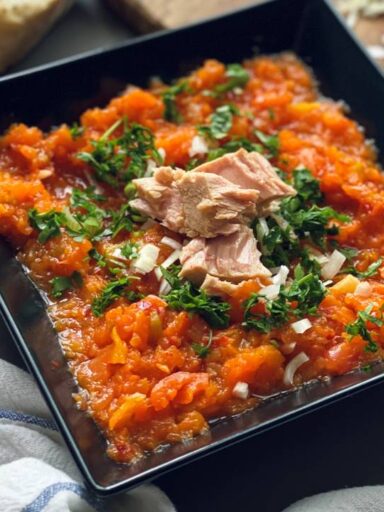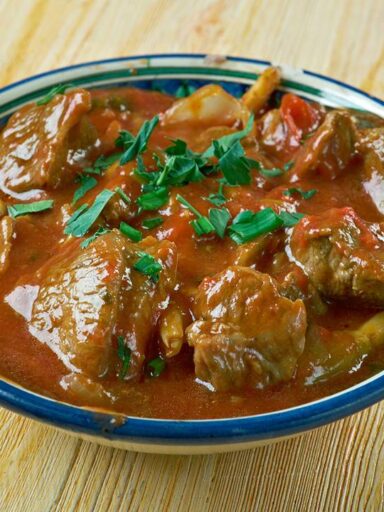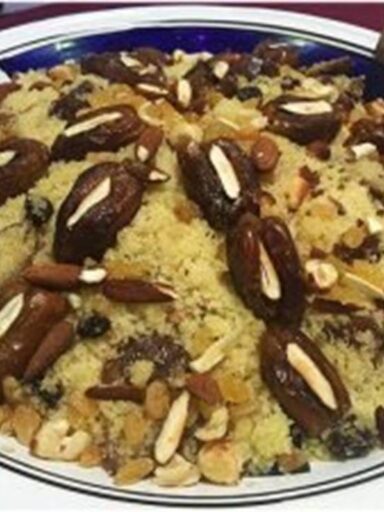Tunisia Couscous dish
Tunisia couscous is not just a dish; it’s a cultural symbol deeply rooted in the country’s history and daily life. This iconic North African dish, known locally as “Kosksi,” holds a special place on Tunisian tables, often served during family gatherings, religious celebrations, and even ordinary meals.
Made From Steamed Semolina Wheat Granules
At its core, Tunisian couscous is made from steamed semolina wheat granules, which form the base of the dish. The preparation of couscous is an art in itself, requiring patience and skill. The semolina is traditionally steamed multiple times in a special pot called a “kiskas” until it achieves a light and fluffy texture. This process allows the couscous to absorb flavours while maintaining its distinct, delicate consistency.
Preparation
What sets Tunisian couscous apart from other versions is its robust and spicy flavour profile. The dish is usually prepared with a rich tomato-based sauce infused with a blend of local spices like harissa, a fiery chilli paste, and ras el hanout, a complex mix of spices that varies by region and household. These spices give Tunisian couscous its characteristic warmth and depth of flavour.
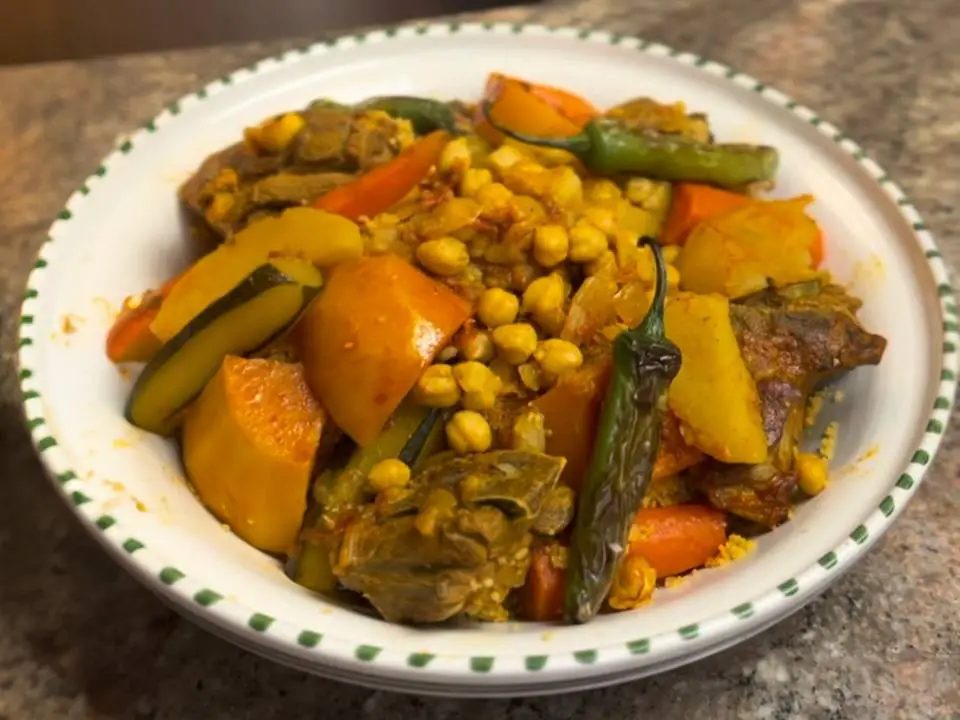
Accompanied by Various Meats and Vegetables
Accompanying the couscous are various meats and vegetables. Lamb is a common choice, often cooked until tender in the tomato sauce, imparting a deep, savoury flavour to the dish. However, other meats like chicken, beef, or fish are also used, depending on availability and personal preference. Vegetables like carrots, potatoes, zucchini, and chickpeas are also integral to the dish, simmered alongside the meat until they are perfectly tender.
In coastal regions, seafood couscous is popular, featuring fresh fish, squid, or shrimp, adding a unique twist to the traditional recipe.
Served in a Large Communal Dish
Tunisian couscous is more than just a meal; it’s a communal experience. It is often served in a large communal dish from which everyone eats, symbolizing unity and togetherness. Whether enjoyed in a rural village or a bustling city, Tunisian couscous remains a beloved dish that encapsulates the rich culinary heritage of Tunisia.
Here’s a traditional recipe for Tunisian couscous, a beloved dish that brings together the vibrant flavours of North Africa:
Ingredients:
For the Couscous:
2 cups couscous
2 tablespoons olive oil
1 teaspoon salt
2 cups water
For the Sauce:
2 tablespoons olive oil
1 onion, finely chopped
3 cloves garlic, minced
2 tablespoons tomato paste
1 teaspoon harissa (adjust to taste)
1 teaspoon ground cumin
1 teaspoon ground coriander
1 teaspoon ground paprika
1/2 teaspoon ground turmeric
1/2 teaspoon ground black pepper
Salt to taste
4 cups vegetable or chicken broth
2 tomatoes, chopped
2 carrots, peeled and chopped
2 zucchini, chopped
1 potato, peeled and chopped
1 cup chickpeas, cooked or canned (drained and rinsed)
1 lb lamb, chicken, or beef (cut into chunks) – or fish for a seafood version
Optional:
Raisins or dried apricots for sweetness
Fresh herbs like parsley or cilantro for garnish
Instructions:
Prepare the Couscous
Steaming Couscous (Traditional Method):
- In a large bowl, mix the couscous with olive oil and salt. Rub the grains between your hands to coat evenly.
- Place the couscous in a steamer basket over boiling water and steam for about 15 minutes.
- Remove from the steamer, fluff with a fork, and drizzle with a bit more olive oil. Repeat the steaming process once more for extra fluffiness.
Quick Method:
- Boil 2 cups of water, add salt and olive oil, and then stir in the couscous. Remove from heat, cover, and let it sit for 5 minutes. Fluff with a fork before serving.
Make the Sauce
Brown the Meat: Heat olive oil in a large pot over medium heat. Add the meat and brown on all sides. Remove and set aside.
Sauté Aromatics: In the same pot, add the chopped onion and garlic. Cook until softened and fragrant.
Build the Sauce: Stir in the tomato paste, harissa, cumin, coriander, paprika, turmeric, black pepper, and salt. Cook for 2 minutes to release the flavours.
Add the chopped tomatoes, broth, and browned meat. Bring to a simmer.
Cook the Vegetables: Add the carrots, zucchini, potato, and chickpeas to the pot. Cover and simmer for 30-40 minutes, or until the meat and vegetables are tender. Adjust seasoning as needed.
Assemble the Dish and Serve: Mound the couscous onto a large serving platter. Create a well in the centre and ladle the sauce with the meat and vegetables into the well.
Garnish with fresh herbs, and if desired, sprinkle raisins or dried apricots on top for a touch of sweetness.
Enjoy: Serve hot, with extra harissa on the side for those who prefer more heat.
This recipe captures the essence of Tunisian couscous, with its rich, spicy sauce and hearty, wholesome ingredients.
